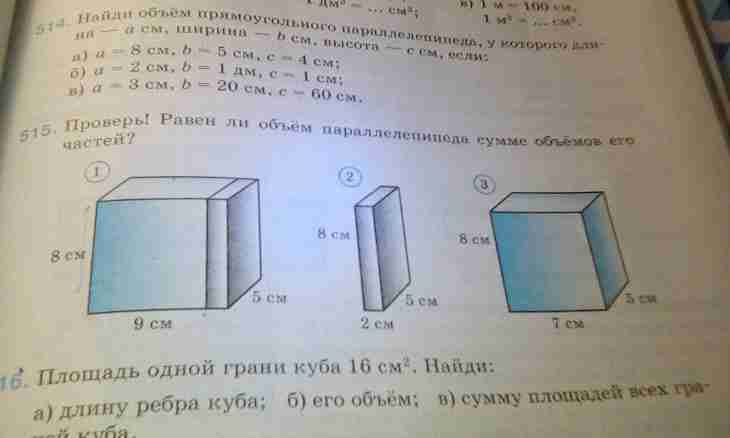The parallelepiped basis is always the parallelogram. To find the area of the basis, calculate the area of this parallelogram. As the special case, it can be a rectangle or a square. It is also possible to find the area of the basis of a parallelepiped, knowing its volume and height.
It is required to you
- Ruler, protractor, engineering calculator
Instruction
1. Generally the basis of a parallelepiped represents a parallelogram. To find its area, by means of a ruler perform measurement of lengths of its parties, and measure by a protractor a corner between them. The area of the basis of a parallelepiped will be equal to the work of these parties on a sine of the angle of S=a between them • b • Sin(α).
2. To determine the area of the basis of a parallelepiped in a different way, measure one of the parties of the basis, then lower on it height from top which lies opposite to this party. Measure length of this height. For obtaining the area of the basis find the area of a parallelogram, having increased length of the party by height which on it is lowered by S=a • h.
3. For obtaining value of the area in a different way measure lengths of its diagonals (distances between opposite tops), and a corner between diagonals. The area will be equal to a half of the work of diagonals on a sine of the angle of S=0.5 between them • d1 • d2 • Sin(β).
4. For a parallelepiped in which basis the rhombus lies it is enough to measure lengths of its diagonals and to find a half of their work S=0.5 • d1 • d2.
5. When the basis of a parallelepiped represents a rectangle, measure length and width of this geometrical figure, then multiply these S=a values • b. It will also be the area of its basis. When the basis – a square, measure one its parties and build in the second degree of S=a².
6. If parallelepiped volume is known, measure its height. For this purpose lower a perpendicular from any top of the top basis on the plane to which the lower basis belongs. Measure length of this piece which is parallelepiped height. If the straight line parallelepiped (his side edges are perpendicular to the bases), is enough to measure length of one of these edges which is equal to parallelepiped height. For obtaining the area of the basis, the volume of a parallelepiped divide S=V/h into its height.

